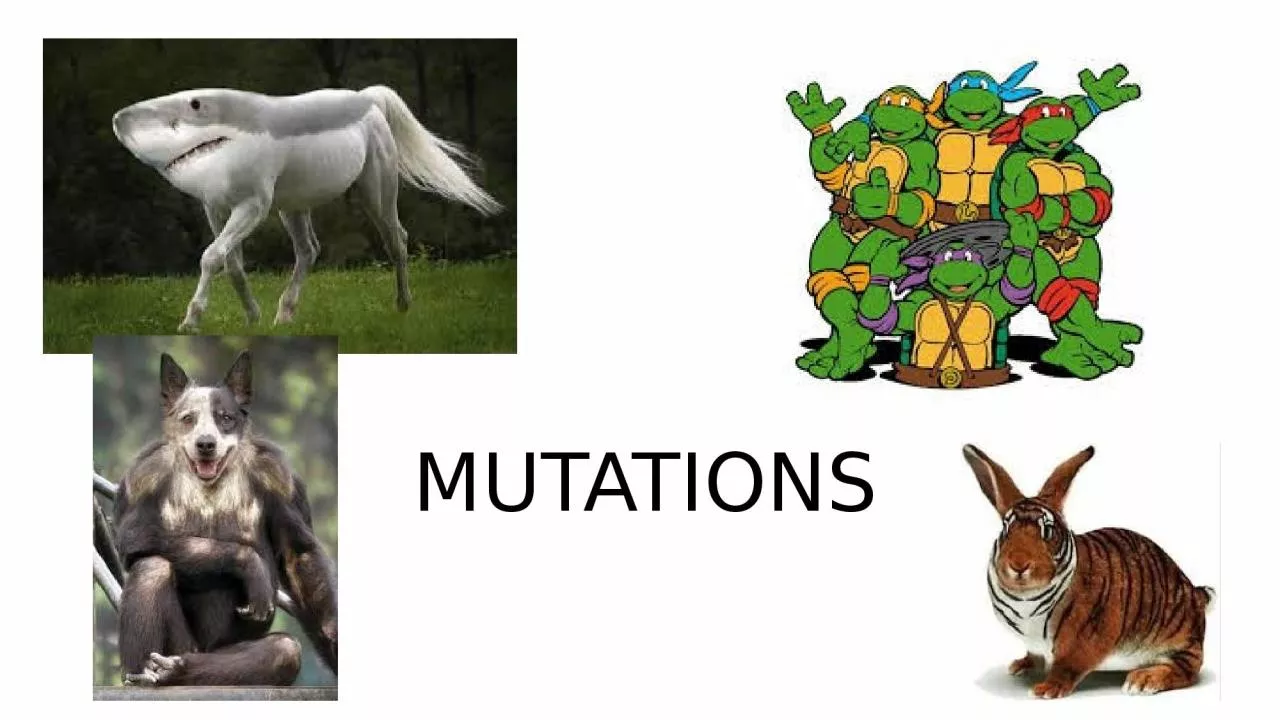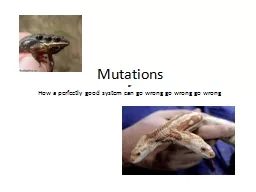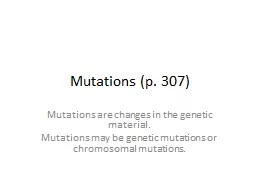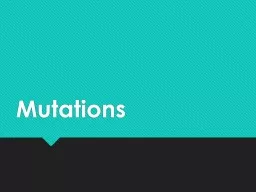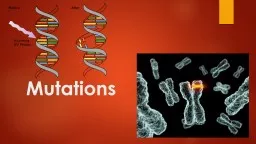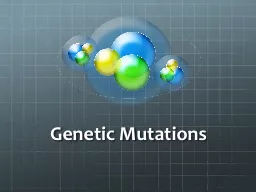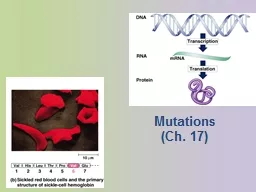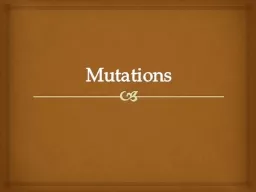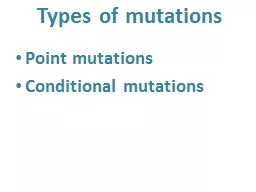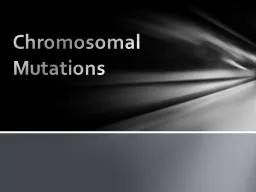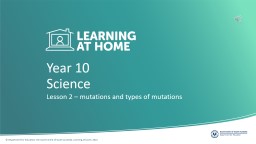PPT-MUTATIONS Chromosome Review
Author : eddey | Published Date : 2024-01-29
In normal diploid organisms two copies of each chromosome are present in every somatic body cell 2n One from mom one from dad The last set are the sex chromosomes
Presentation Embed Code
Download Presentation
Download Presentation The PPT/PDF document "MUTATIONS Chromosome Review" is the property of its rightful owner. Permission is granted to download and print the materials on this website for personal, non-commercial use only, and to display it on your personal computer provided you do not modify the materials and that you retain all copyright notices contained in the materials. By downloading content from our website, you accept the terms of this agreement.
MUTATIONS Chromosome Review: Transcript
Download Rules Of Document
"MUTATIONS Chromosome Review"The content belongs to its owner. You may download and print it for personal use, without modification, and keep all copyright notices. By downloading, you agree to these terms.
Related Documents

